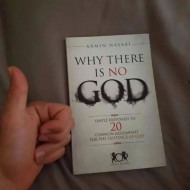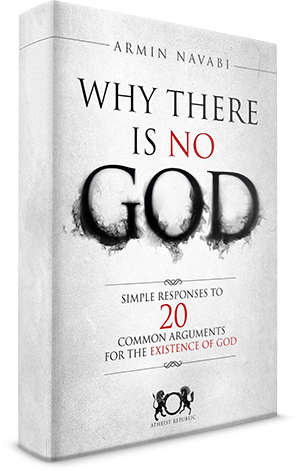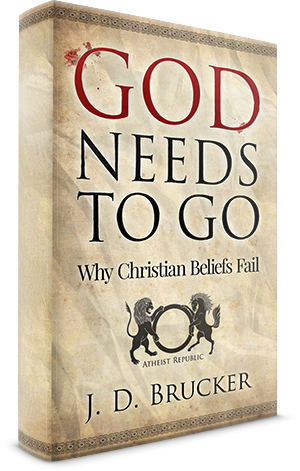
God ‘is’, the same as any supernatural cause ‘is’. Such a God, in attempting ‘omnipotence’ or any of the other 98 attributes, entails complexity by definition, and must be constructed of simpler, more fundamental predicates. These exist within the domain of natural reality.
‘Reality’ can appear as a shaky concept to some, while frustratingly obvious to others. My purpose here is biased – I appeal to the latter group with a realist understanding of phenomena considered antithetical to classical realism (supernatural causes such as ‘God’, etc.) without losing ground to metaphysical apologists (1). As for those who consider ‘reality’ as nebulous or irrelevant, feel free to continue reading to see how a dreaded positivist attempts to ground supernatural experiences of the (in)sane in the spatiotemporal fabric of our existence. The definition of ‘reality’ I adapt was formalized over a century ago (2), revitalized recently as ‘neorealism’ (3). The relevant texts are linked at the end for those interested in reading further. Here, only concepts relevant to the current topic are mentioned.
The Cross Section
A critical neorealist concept is the ‘cross-section’, or C-S. This C-S describes those features in your immediate environment that can be reacted to within a given period. This can involve flicking a light switch, or even going indoors upon seeing a greying sky. In either case, the sky and the switch constitute as parts of your discriminative C-S within the instances described. A useful illustration (4) is a searchlight from a lighthouse illuminating the sections of the ocean on which it shines. Imagine the illuminated section as indicative of your C-S encompassed within an ocean of reality.
It’s obvious that the ocean continues to exist beyond where the searchlight can shine, similar to the world beyond our individual perspectives, the global reality. Where the searchlight shines is reflective of our local reality, which obviously exists within the global kind. This makes the meaninglessness of questions such as “if a tree falls in the woods, does it make a sound?” patently obvious. The tree falls within a global reality, even if not as a part of any individual’s C-S. Whether it makes a sound depends on how you define ‘sound’. If your definition of ‘sound’ requires a listener present, then the tree doesn’t make one – alternatively, if you define ‘sound’ as a specific pattern of molecular vibrations, then of course it does. Other possibilities are, if your definition of ‘sound’ requires both propositions in conjunction (vibrations + listener), then no sound occurs. If your definition is satisfied by either (vibrations or listener), then yes (unfortunately “I heard a sound in the forest…did a tree fall?” doesn’t seem that clever).
Your C-S depends on what you are capable of interacting with, which itself modifies and is modulated by the history you bring and the input you receive from the situation (‘history’ in both a biological and experiential sense). For instance, how you perceive a laptop in front of you depends on whether you intend to play Call of Duty, Diablo, or replace the motherboard. Alternatively, for the cat looking over your shoulder, the laptop might occupy a different C-S. For her, the laptop functions as a source of ‘click’ noises, warmth, and your attention. Each organism’s biological makeup and behavioral history sets the ‘borders’ of its C-S. The C-S simply is as a given of all observable life (6,8). One can even make the unfashionable claim that a C-S is absolute if taken relative to all other points in space-time which, while impossible in practice, is nevertheless worth contemplating (the futility of global relativism in favour of local absolutes is coming back in flavour (5), as predicted nearly a century earlier (6)).
The point here is this - regardless of the action your history determines at a given point in time (play Diablo or replace the motherboard), the laptop in front of you exists. To argue otherwise is to argue against common sense, a practice maintained by many branches of philosophy and psychology (7). To the famous cokehead alleged to have once said, “sometimes a cigar is just a cigar”, I say that a cigar is always a cigar - whether you smoke it or stuff it up a hole is a matter of personal proclivities.
Extended reality and the propagation of symbols
The two shades of reality described is nothing new and has been stated under different labels for thousands of years (9,10). All manner of being occurs within these domain, whether ‘mental’ or ‘material’ (a questionable distinction in any case – (3)). Any counter-position admits a fundamental distinction between the two, encouraging a metaphysical dualism (e.g., indirect realism). Alternatively, avoiding either side by adopting so-called “a-ontological” positions is simply to reiterate the failed arguments for agnosticism, a position as irrelevant as it is untenable (11).
Within a global reality, our lives play out in deterministic, though not necessarily linear, patterns. The laws underlying these patterns become apparent with gradual scientific endeavour, only to reveal more complex lattices beneath. Such knowledge would have been unlikely had it not been for our capacity to create, exchange, intertwine and/or reject symbols as meaningful abstractions in our lives. While arbitrary, a seemingly infinite array of symbols can distinguish between the subtlest of sensations, actions and/or cognitions, best in audiences with a rich history with similar classes of such symbols (e.g., mathematicians best understand mathematics just as the Spanish best understand Español). The power of words, the commonest of symbols, is the power of gods. To exact it, converse with a reasonably educated person. Soon, you two will have exchanged more information then entire civilisations had available over the course of their existence! Some of our greatest accomplishments in this regard are the natural laws of science – while admitting they may someday be wrong (12), the elegant iterations of “F=ma” or “E=mc2”, now in the vernacular of every high school student, represent pinnacles of logical refinement.
Just as the Parthenon is a bleached husk of its former, flamboyant self (19), the most highly elaborate symbol-structures may one day erode (forgotten religions, aether), or adapt (new iterations of Newtonian mechanics - (14)) or may participate in discourses far beyond their intended definitional scope (any-nonsense by Deepak Chokra). Their ‘values’ are obviously learned (nobody is born averse to a swastika), to the point that they become innate to the symbol itself (Arabic → the ISIS flag) or transferred to something which may had been of neutral value before (the Muslim neighbour). For example, stating “John is a neo-nazi” before introducing you to a fellow named “John” would evoke a first impression that would be significantly different than if I had stated “John is a banana”. In both statements, “John” is the subject of interest, towards whom we may not necessarily harbour any strong feeling until he was related with an emotion-eliciting symbol (e.g., the word ‘neo-nazi’ and, for some I guess, the word ‘banana’). Fortunately, ‘symbolic’ bricks are much more malleable than their physical counterparts and over the course of interacting with John, you will soon realize that he is neither a neo-nazi nor a banana, simply a teenager in blue and yellow overalls who loves quoting John Oliver.
Symbolic communication has extended the borders of our spatio-temporal C-S to include events that were traditionally impossible to interact with. Starting with cave drawings, the verbal C-S became ubiquitous with the printing press. The internet has pushed its boundaries once again, as we are able to now reciprocally interact with phenomena once in the knowledge structures of a relative few. For example, if a commenter is driven to provide a response to this blog, we become in that instance (i.e., temporally enclosed period) members of a shared extended reality. This reality is ‘extended’ in the sense that the events/circumstances go beyond our individual locations in space and time (i.e., towards global reality) but is nevertheless reciprocal, where my actions in this part of the universe invoke a reaction from you, located in another part of this universe (similar to local reality). To expand the border of this C-S, I can respond to your comment. Or I can leave it as is, relegating that instance as a past event. The growth of the C-S depends on the extent to which we continue interacting (13). Current technology has certainly made it easy to find examples of individuals interacting in extended reality, in time periods where causative effects occur relatively quickly (e.g., when using Skype, or controlling Rover over the surface of Mars). It is within this domain of ‘extended reality’ that supernatural causes reside.
Show me
Let me introduce a symbol called “Buzti” which, although employing English characters, does not exist as a word in the English language. It is a ‘neutral’ term, unlikely to pose any significance to those of you who are ignorant of the Great “Buzti”. If I had sufficient authoritative clout, I would spread the truth that ‘Buzti’ is the uncaused cause, the all-encompassing antecedent for phenomena that I cannot explain (Buzti caused the the Big Bang), and that He is my personal judge, promised to rectify the personal/tribal injustices I have been dealt, and that Buzti will punish these wrongdoers/unbelievers, for as a superhuman being with impossible powers, Buzti is omnipotent! And just! and so ad infinitum.
I can fill volumes with claims of Buzti’s abilities, claiming the messages to be from Buzti itself, with dissenters being ridiculed/beheaded until the majority accepts my views. This interestingly human-like being is the uncaused cause of all there is! I will pass this knowledge to your children and my fellow adults with clauses indicating Butzi’s claims as Absolute, mocking the cautious ambiguity of scientific explanations as reflective of the imperfect human condition. If I’m clever, I could doctor Buzti’s text accordingly, manipulating its appearance and language, and advertise it as a great archaeological discovery, dating it to a time of my choosing, providing no evidence beyond “This is the truth, because I was told by B, and Y told A, who told X, who told B...and X/Y/A/B would never lie! They are men of Butzi!”.
With the appropriate rhetorical devices, I can adjust my claims to be sufficiently ambiguous so that clear contradictions are concealed via alternative interpretations. I could employ a mish-mash of languages, either extinct and/or generic, whose ambiguity invites wobbly interpretations (17). Any interpretation I don’t like can then be relegated to faulty interpretations made by the other, for Buzti is All-Good! I can place statements to appease the hippies (‘Buzti permits no compulsion in religion’) and the warmongers (‘Buzti orders to kill the non-Buzti believers’) alike, and this will not be contradictory among the Buzti-believers. Buzti is incapable of contradiction! It’s you, the flawed human, who cannot comprehend the ‘deeper’ meaning underlying such alleged contradictions!
Most of you (I hope) will immediately renounce Buzti, for our present contexts have not added historicity to the Buzti concept, which by virtue of persistence can attain so-called ‘value’ (or so the cultural relativists would have you believe). Perhaps after I die, and many generations pass, and someone salvages the Gospels of Buzti from a monastery in Attnang-Pucheim, what is to stop them from claiming Buzti as the Absolute and the Savior? Buzti now lives in the extended domain, and may continue to do so long after I have been hollowed out by worms. With the support of conniving apologists, well-meaning spiritualists and illiterate buffoons, Buzti becomes an entity in and of itself, consequating movie deals, Mel Gibson portrayals, perhaps even a suicide bombing or two.
The above explication has been made numerous times far more eloquently (recall the orbiting teapot). What is different now is that science is finally uncovering evidence that favours an atheistic perspective above all others, moving ‘atheism’ from the realm of logical likelihood to empirical certainty. Specifically, it has been shown that placing some formerly neutral symbol within emotion-eliciting structures involving relational propositions can alter how the formerly neutral symbol is appraised simply due to being embedded in said structures (18). What this means is that relating to a symbol unsubstantiated claims of Platonic absolutes (Buzti is the Greatest, the Most-Merciful!) and other forms of extraordinary terms to an audience from an early age ensures their reluctance to let it go, with many continuously modifying their symbol-definition so that it fits with their current needs. Indeed, the trend of many ‘moderate’ believers has been to implicitly assume their interpretation as better than the fundamentalist alternative (it cannot be the other way round to them), not realizing that the ‘better’ aspects of their life are generally due to, among other things, a greater selection from the fruits of capitalism, something their previous residences would/could not provide. Yes, the system has problems, but it is better than anything tried before.
What is the similarity between Buzti, YHWH, Allah or Krishna, and how can understanding it help understand supernatural entities? All make claims of absolute abilities, meaning they are by definition relations involving more than one term, and have been evidenced as entities from instances exclusive to our extended realities (similar to the Higgs boson) but with no denotative correspondence with other systems (contra the Higgs). As such, both ‘God’ and the Higgs have being in a logical sense, but remember that logic does not necessitate ontology (talking about ‘unicorns’ do not make them globally real, ut ad Quine). Being implies the recognition of what is filtered through our cross section (6). These filters are historically adjustable, allowing interpretations of events that can markedly differ from someone in the same space. Being follows simple recognition (A is A), whose purpose in later discourse makes it something ‘more’ from its initial state.
An object’s being must be either simple or complex, where the latter constitutes of combinations of the former (6, 15). When the being of a term is complex, it by definition constitutes of simpler fundamentals. Hence propositions entailing attributes to supernatural beings, by doing so, become complex. Otherwise, ‘God is God’ would be no different than ‘nug is nug’ if there were no attributes associated by us with God. But in associating attributes, an active (perhaps ‘agentic’?) function for the proposition as a whole arises, which can be either i) a predictable consequence from demonstrable relations, denoting more complex relations (Higgs) or ii) an ontologically vapid notion (unicorn).
On the other hand, if a term’s being is assumed as a simple fundamental, it can be used as an explanatory primitive within one’s extended reality in that it is taken by the perceiver as a fundamental is. However, fundamentals in any system must be maximally precise, theoretically falsifiable, and practically stable. What it denotes must be specific (light travels at X meters per second) and connote little, if anything, by itself (e.g., the speed of light explains other physical phenomena in conjunction with other fundamentals, like ‘mass’). Alternatively, by connoting everything (Buzti knows all!), such a being denotes nothing. Fundamentals connoting ‘everything’ do so through the associations attributed by individuals to them, and are meaningless premises if non-falsifiable. In reality, an intricate proposal of Buzti as the creator/surveyor of everything in the universe has the same evidential weight as claiming that your God, or a Unicorn for that matter, did the same.
Conclusion
The take home point is this – being describes that which is identified, regardless of form (e.g., whether through ‘thoughts’ or touch). Through the symbolic practices inherent in our language, these beings propagate and reproduce across the overlapping realities of our cross sections (16), described previously as our extended reality. Every item by virtue of being identified has being, where useful beings permit deeper analyses (if complex) or denotative applications (if simple). The complex can only be analyzed in terms of the simple, but never the other way round if one wants to avoid tautologies.
Observe your own fundamental premises and note how they filter the searchlight of your cross-section – does it appear to illuminate all? Then it illuminates nothing. Can you see the remaining ocean? No, yet you find it more appealing than what your present environmental cross section provides? Who is the philosopher-king who says we’re ‘only’ seeing ‘shadows in a cave’, and how did s/he get on this pedestal above the rest of humanity? Imaginary journeys through the greater darkness can seem appealing at times, but ‘imaginary’ is all they can ever be.
Here God exists, and seemingly connotes everything across the extended realities of many. See Him for what It is, a complex aggregate of propositions built on simpler (more fundamental) symbolic bricks, which are both non-supernatural and experimentally observable. To ask what ‘lies beyond reality’ is to ask ‘what is darker than black’? While either question could inspire a philosopher’s graduate dissertation, nobody has, or can, ever perceive it. The best we can do is to ‘imagine’, which is fine as long as other people aren’t hurt, for then it becomes a problem.
Any imagined (supernatural) cause can gain a foothold in this tapestry of symbols, where contemplations of the ‘unreal’, or darker than black colours, can continue unabated. And most of these explanations will continue to exist in this extended tapestry, though we should be aware that this does not give them explanatory validity. The feelings such symbols elicit are derived from relations between simpler elements. If this view becomes realized, then the hateful symbols of today (ISIS flag, a swastika, a burning cross) will become fleeting curiosities for the disinterested historian. On that day, we would know that the utopia-promising systems indicated by those symbols have failed to the extent that they barely evoke a second thought.
References:
1 – For a primer of Berkley’s idealism – see https://www.youtube.com/watch?v=v_-2l3AtUn0. Revisions of a flawed premise do not make it any more acceptable – see http://www.philosophypathways.com/essays/kennedy2.html.
2 – The full text can be found at https://archive.org/details/newrealismcooper00marviala.
3 – by Francois Tonneau – see https://repositorium.sdum.uminho.pt/bitstream/1822/24851/1/Tonneau%20-%2....
4 – Consciousness is a function of the brain as much as passing gas – http://www.behavior.org/resources/151.pdf
5 - “Physics is (must be) local” - http://www.theatlantic.com/science/archive/2016/02/all-physics-is-local/...
6 - Another seminal piece by a man born a century too early - https://archive.org/details/conceptconsciou00holtgoog
7 – For some intellectualist-sounding wordplay, see http://eu.wiley.com/WileyCDA/WileyTitle/productCd-111848956X.html
8 – Plants have feelings too, dammit! http://aob.oxfordjournals.org/content/92/1/1.short
9 – An old argument, but prevalent nonetheless http://plato.stanford.edu/entries/realism/
10 – Aristotle got many things wrong, but he began in the right direction http://www.philosophybasics.com/branch_realism.html
11 – Agnosticism is acceptable as a transitional state, and then only temporarily. Advertising it as your mainstay is intellectual laziness - http://www.skepticink.com/incredulous/2012/09/25/agnosticism-is-untenabl...
12 – The beauty of science is that its ok to be wrong! http://www.wired.com/2015/02/scientists-wrong-time-thats-fantastic/
13 – Giving interpretive dance a whole new meaning - https://www.youtube.com/watch?v=-7ijI-g4jHg
14 – Don’t get rid of Newton yet http://astroweb.case.edu/ssm/mond/
15 –Logic http://www.logicinaction.org/docs/ch4.pdf
16 - For what a cross-section may look like, see http://www.sciencedirect.com/science/article/pii/S1364661316000668
17 – how to re-interpret the divine? http://www.theatlantic.com/past/issues/99jan/koran.htm
18 – emotion manipulation can be surprisingly systematic http://www.tandfonline.com/doi/abs/10.1080/17470218.2016.1246576
19 - the Greeks loved the rainbow http://www.livescience.com/649-parthenon-riot-color.html





























